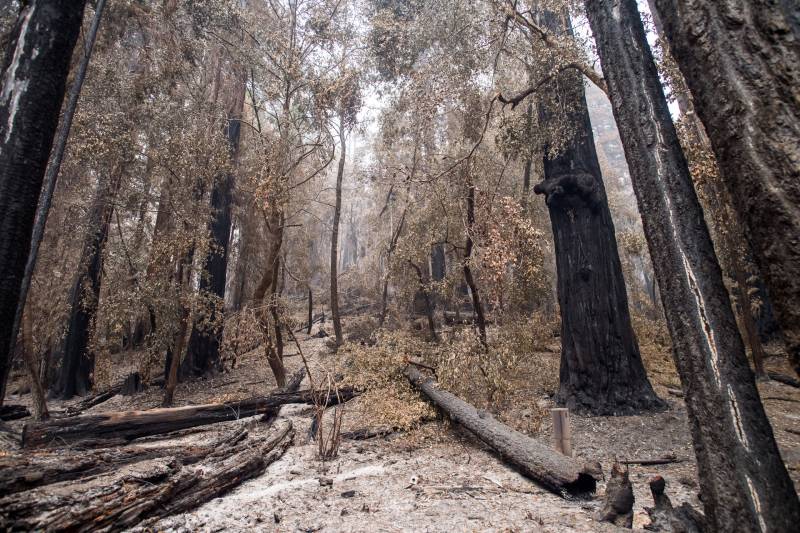The incident is not the only flare-up this year. Last week, scientists with Sequoia National Park found a giant tree still beset by flameless burning in the remote Board Camp Grove, nine months after it was scorched during last summer’s Castle Fire.
Flare-ups are not uncommon in thickly forested places after wildfires have ripped through areas with heavy fuels. Coals remain warm and deep within big logs, root balls, and rotten material buried underground.
When the weather warms up and trees, brush and grasses dry out, these embers can flare up and ignite new fires. At times, they spread and burn dangerously out of control. That’s how the 1991 Oakland Hills Firestorm began, Stephens says, which eventually spread to consume 2.5 square miles of neighborhoods off Grizzly Peak Boulevard and Claremont Canyon, killing 25 people.
“Generally, agencies will go around the edges of big fires and do a mop-up operation, trying to get rid of all of those smoldering areas,” Stephens said. “Maybe 200 feet, 300 feet from the fire line. But the interior of those big giant fires are not going to be mopped up. They’re just too large.”
A lack of substantial winter rain has left much of the state parched in drought conditions, especially in the Bay Area.
Last weekend the National Weather Service issued a rare spring red flag warning across the inland hills of the Bay Area.
UCLA climate scientist Daniel Swain says California is drier than it was at “any point during the last drought, which is kind of shocking, because things got pretty bad then.”
He says the dry conditions are a “very alarming signal” in terms of the health of forests and wildfire risk.
“You’re going to see increased forest mortality, and we’re going to reap the wildfire impacts, unfortunately, later in the season,” he said.
More fires have ignited earlier this year than last year in the state, but spring fires tend to be smaller and less dangerous. Swain says conditions are primed for a particularly severe fire season, once again, in most of the state.

